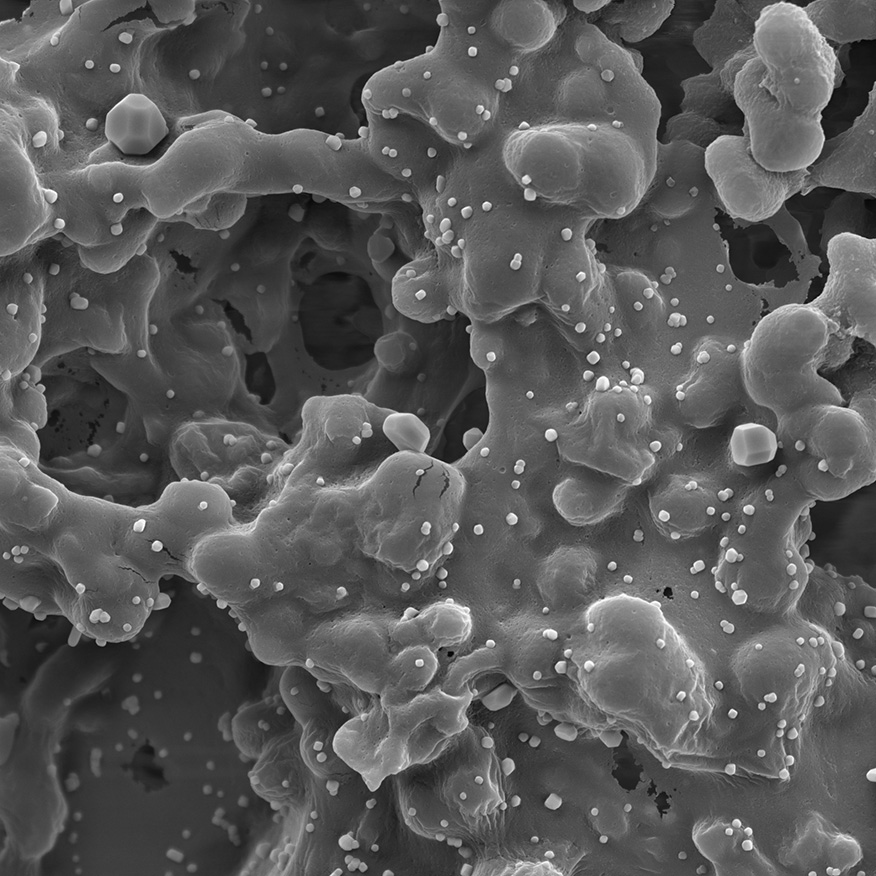The team demonstrated the test’s success on West Nile virus (WNV) in infected versus non-infected crocodiles. WNV is economically significant as it causes disfiguring skin lesions in the reptiles, making their skins unusable.
Lateral flow tests (more commonly known as RATs) have become familiar to us through their use to detect Covid-19 and for pregnancy tests. They can be used as diagnostics to detect a wide range of biological molecules and viruses more quickly than many lab-based tests. They also have the advantage that they can be carried out at the point of care or in the field by non-experts.
The lateral flow test is based on the team’s patented hybrid Binjari virus system described in our previous story. It immobilises hybrid Binjari–WNV virus on a special paper inside a plastic casing. Scanning electron microscopy at our University of Queensland facility showed that the hybrid viruses remained intact and were well dispersed on the paper. It also showed the structure of other parts of the device.

Scanning electron micrograph of the hybrid WNV–Binjari viruses (white dots) attached to the paper in the lateral flow test.
When crocodile serum is applied to the test, antibodies to WNV in the serum stick to the immobilised viruses and are detected by a colour change in less than 15 minutes. The demonstration was 100% efficient at detecting WNV when it was known to be present in the crocodiles and is easy to do either in a lab or outside on a crocodile farm.
WNV also infects humans, birds and horses and this test could be readily adapted to detect WNV in those species as well. It will also form a blueprint for using the hybrid Binjari platform in quick and easy lateral flow tests to detect a wide range of flaviviruses in humans and other animals – something that would be widely applicable and is not currently available.

Scanning electron micrograph showing glass fibre paper infused with 40-nanometre gold particles attached to an antibody against a range of flaviviruses. This forms part of the lateral flow test device.
This image from the project by Ryan Johnston recently won the “Art in Science” award at the 2023 MicroTAS conference in Katowice, Poland, sponsored by the Royal Society of Chemistry (RSC) and the National Institute of Standards and Technology (NIST). As the winning image, it graced the cover of the RSC’s “Lab-on-a Chip” journal and garnered a financial prize. It shows glass fibre paper infused with 40-nanometre gold particles attached to an antibody against a range of flaviviruses. This impregnated paper is part of the lateral flow test device.
R. Johnston et al., bioRxiv 2024
DOI: 10.1101/2024.03.24.586480
Scanning electron micrograph showing glass fibre paper infused with 40-nanometre gold particles attached to an antibody against a range of flaviviruses. This forms part of the lateral flow test device.
May 23, 2024